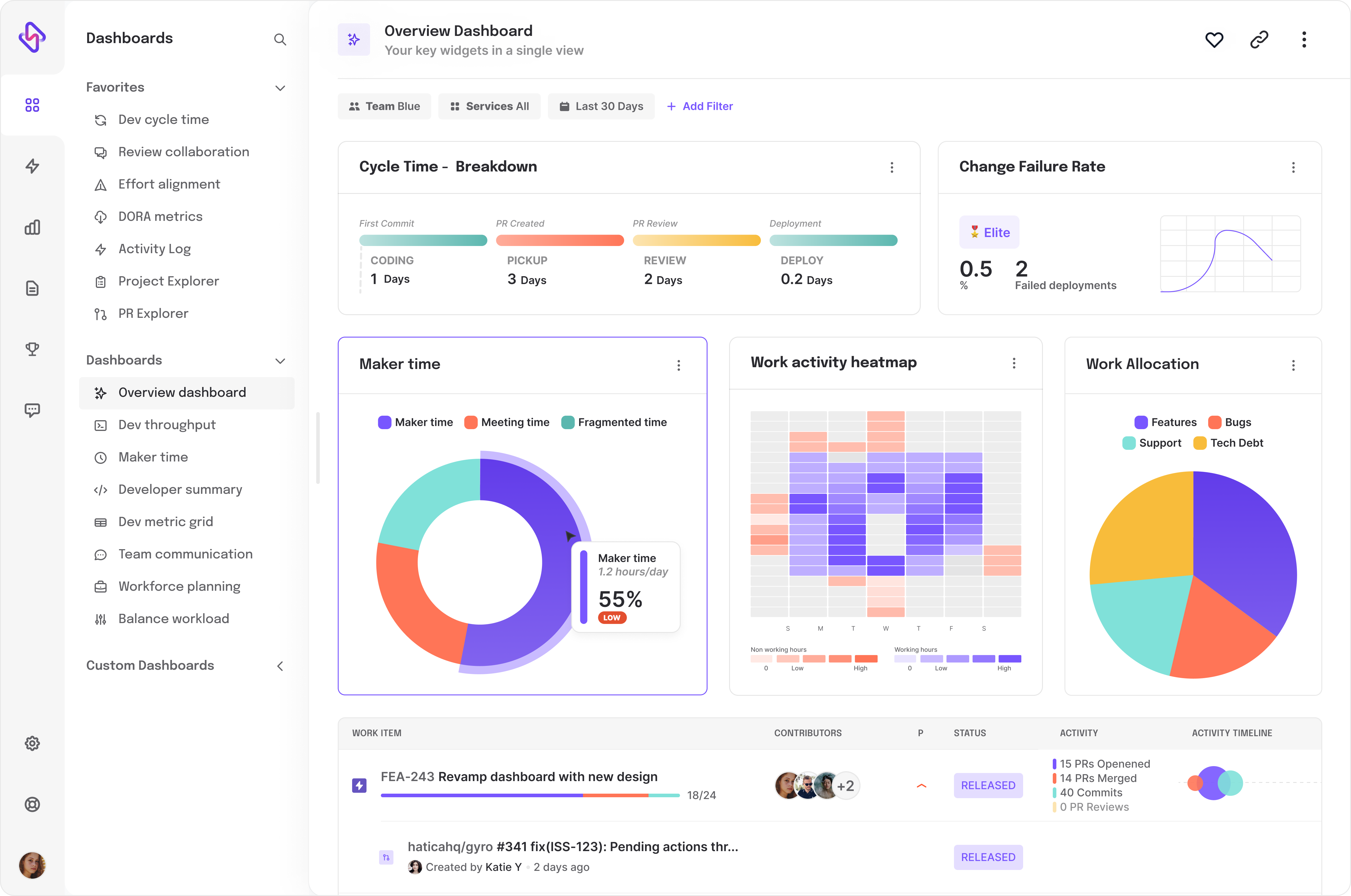Managing a collaborative software development project can be a daunting task, especially when it comes to version control. Git is an industry-standard tool that helps developers manage changes and updates to a complex web of code. An effective Git branching strategy is essential for development teams to maintain a clean, organized, and efficient workflow. This article explores different branching strategies and their benefits to help you decide which approach is best for your team.
What is Git Branching?
The act of establishing distinct lines of work within a Git repository is known as "Git branching." A branch in Git is a parallel version of the codebase that lets programmers experiment, work on new features, and resolve bugs without impacting the main codebase.
Using branches, developers may make changes in isolation, test them, and then merge them back into the main branch. This strategy makes it possible to handle several code changes at once and allows for concurrent development. When modifications are finished on one branch, they may be merged into other branches to make it easier to incorporate updates or bug fixes into the main codebase.
4 Best Git Branching Strategies
There are several Git branching strategies that development teams can employ, each with its own strengths and weaknesses. There is no one-size-fits-all branching strategy for every team. The best approach depends on your team's size, development practices, and specific project requirements. Common strategies include Feature Branching, Gitflow, and GitHub Flow. Let's take a closer look at the building blocks of these strategies and how they can help streamline your development workflow.
1. Feature Branching
In Feature Branching, a developer creates a new branch for each feature or bugfix they are working on. This branch is based on the main branch and is used exclusively for developing the specific feature or fixing the bug. Once the work is completed and tested, the feature branch is merged back into the main branch through a pull request.
Advantages of Feature Branching
- Parallel development: Developers can work on different tasks without disrupting the main codebase or causing conflicts.
- Simplified testing and review process: Each feature branch can be tested and reviewed independently before being merged with the main branch.
Disadvantages of Feature Branching
- Merge conflicts: Longer-lived feature branches can result in more complex and time-consuming merge conflicts when integrating with the main branch.
- Slower integration: As features are developed in separate branches, it may take longer to integrate changes and test the combined functionality of multiple features.
2. Gitflow Workflow
Gitflow is a widely-used Git branching strategy that involves the use of multiple branches to manage different aspects of the development process. This approach includes the following branches:
- Master: The primary branch that contains the production-ready code.
- Develop: A branch that serves as the integration point for new features.
- Feature: Branches created for individual features or tasks.
- Release: Branches used for preparing and testing the code for production releases.
- Hotfix: Branches created to address critical issues in the production code.
Advantages of Gitflow Workflow
- Clear separation of concerns: Each branch serves a specific purpose, making it easy to manage and organize the codebase.
- Facilitates parallel development: Multiple developers can work on different features, releases, and hotfixes simultaneously.
Disadvantages of Gitflow Workflow
- Increased complexity: The Gitflow workflow involves multiple branches and a more complex merging process, which may be challenging for inexperienced developers or smaller teams.
- Slower release cycles: Due to its structured approach, the Gitflow workflow might lead to slower release cycles compared to other branching strategies.
3. Trunk-based Development
In trunk-based development, all developers work directly on the main branch, and short-lived feature branches are only created when absolutely necessary. This strategy focuses on continuous integration, frequent commits, and extensive testing.
Advantages of Trunk-based Development
- Faster integration: Changes are integrated into the main branch more quickly, allowing for rapid feedback and reduced merge conflicts.
- Simplified workflow: With fewer branches to manage, trunk-based development offers a simpler workflow that is easier to maintain.
Disadvantages of Trunk-based Development
- Risk of instability: Since all developers work directly on the main branch, there is an increased risk of introducing instability or errors into the codebase.
- Limited isolation: This approach provides limited isolation for individual features or bug fixes, potentially leading to conflicts and increased difficulty in tracking changes.
4. Release Branching
Release branching is an approach in which developers create a new branch for each software release. This strategy separates development work from release preparation, allowing teams to continue working on new features while stabilizing the current release.
Advantages of Release Branching
- Clear separation between development and release: This approach enables teams to focus on stabilizing the release without affecting ongoing development work.
- Flexibility in release management: Teams can easily manage and prioritize release schedules and deliverables.
Disadvantages of Release Branching
- Increased complexity: Managing multiple release branches can become complex, especially for teams with frequent releases or overlapping development cycles.
- Potential delays: Creating separate branches for each release may slow down the integration of new features into the main codebase.
How to Implement Your Chosen Git Branching Strategy?
Once you have selected the branching strategy that best suits your team's needs, follow these steps to implement it:
- Educate your team: Ensure all team members understand the chosen branching strategy and its benefits. Provide training resources, documentation, and tools to help them adopt the new workflow.
- Enforce consistency: Establish clear guidelines and conventions for branch naming, merging, and deleting. Consistent practices help maintain an organized and efficient repository. Check out this detailed guide for more information on managing and deleting Git branches effectively.
- Automate processes: Use automation tools to streamline tasks such as branch creation, merging, and deployment. Automation can help minimize human errors and improve overall workflow efficiency.
- Monitor and review: Regularly monitor your team's adherence to the branching strategy and review the process for potential improvements. Solicit feedback from team members to identify any challenges or inefficiencies in the current workflow.
- Adjust as needed: As your team grows or your project requirements change, be prepared to adjust your branching strategy. Continuously evaluate your approach to ensure it remains effective and efficient for your team's specific needs.
Why Git Branching Matters in Development Teams?
When multiple developers work on a project, they often make changes to the same codebase. With Git, team members can create isolated branches to work on new features, bug fixes, or other tasks. This ensures that the main codebase remains stable and allows developers to collaborate without interfering with each other's work. Branching also makes it easier to review and test code before integrating it into the main codebase.
Enhancing Git Strategies for Success with Hatica
Creating an effective Git branching strategy for your team requires careful consideration of your project's requirements, team size, and development practices. By choosing the right approach, you can improve collaboration, streamline development processes, and maintain a clean and organized codebase. Whether you opt for feature branching, Gitflow, trunk-based development, or release branching, taking the time to implement and maintain a solid branching strategy will ensure your team's success in the long run.
However, simply using Git strategies might not be enough to get the best out of your project space, an engineering analytics tool can equip you with the data-driven insights you need to place your team on top. Hatica offers metrics across 13 dashboards, powered by CI/CD tools, Jira, GitHub, and GitLab. By collating tool activities at one place, Hatica helps teams streamline their workflow and improve productivity.
Subscribe to the Hatica blog today to read more about unblocking developers, and boosting productivity with engineering analytics.
TL;DR
FAQs
1. Why is choosing the right branching strategy important?
Choosing the right branching strategy is important because it impacts collaboration, code integration, and release management. A well-defined strategy can streamline development, reduce conflicts, and enhance the overall efficiency of the development process.
2. What are the benefits of a well-implemented branching strategy?
A well-implemented branching strategy improves code quality, reduces conflicts, facilitates parallel development, enhances collaboration, and streamlines the release process.
3. How do I choose the right branching strategy for my team?
Choosing the right strategy depends on factors like team size, project complexity, and release frequency. Evaluate your team's needs and preferences, and consider factors such as parallel development, release management, and ease of integration when selecting a strategy.
4. Can I switch to a different branching strategy later?
Yes, you can switch strategies if your project's needs change. However, it might involve adjusting your workflow, migrating branches, and training your team. It's important to plan and communicate the transition effectively.



